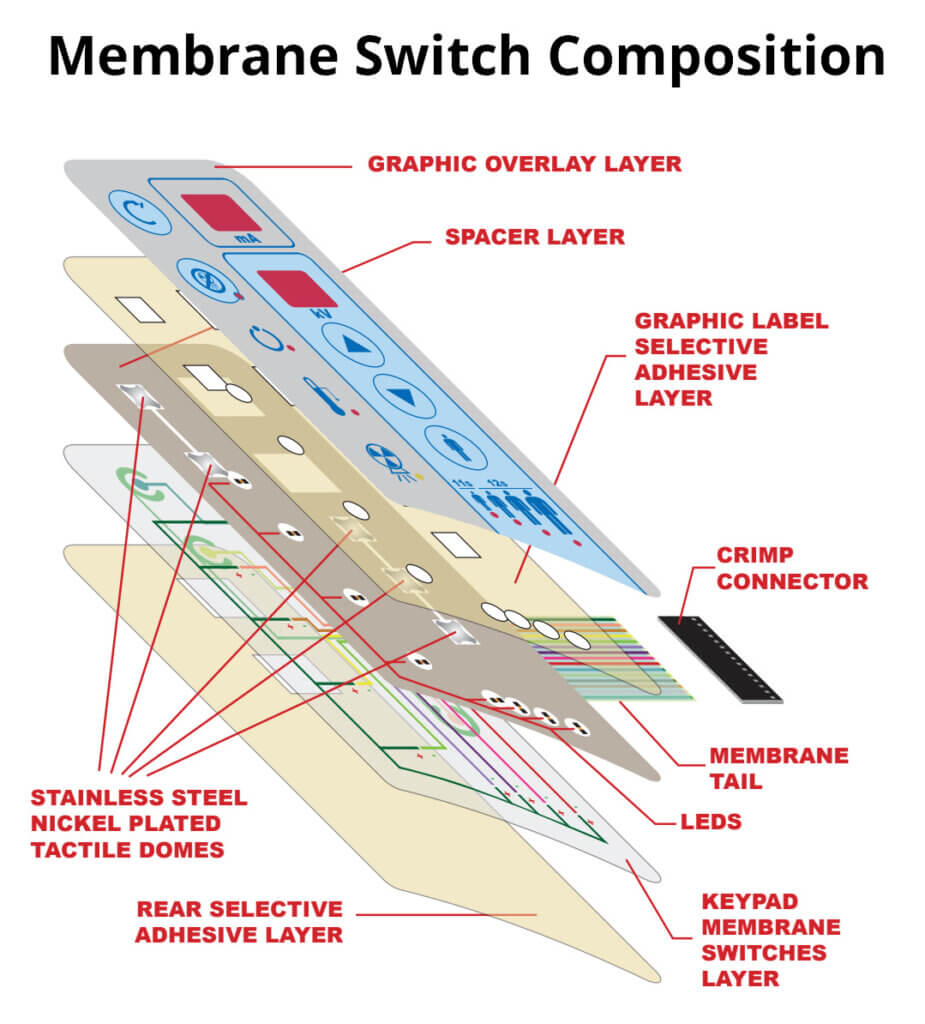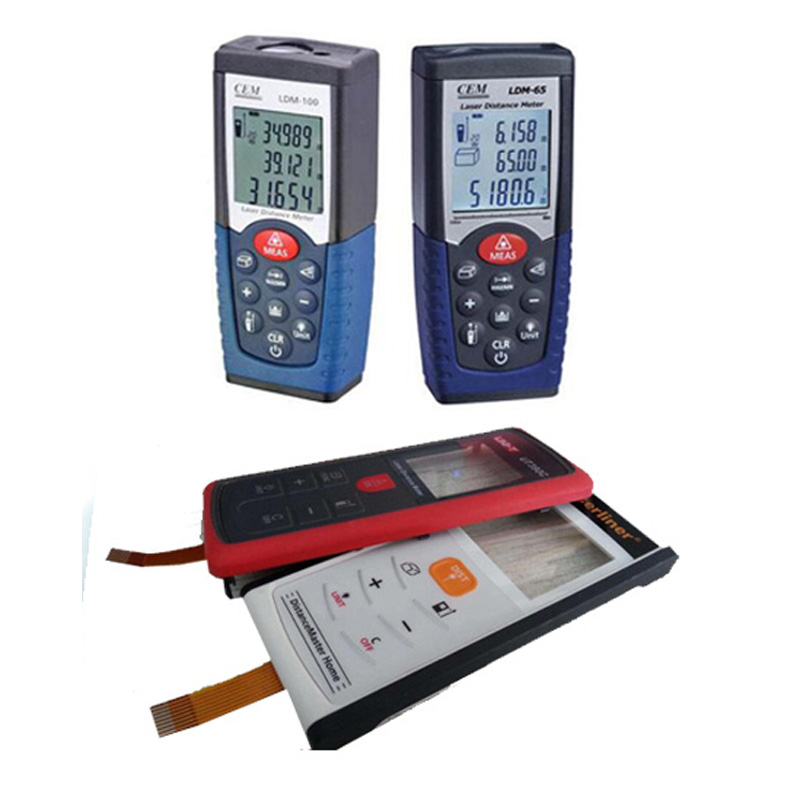Recognizing the Importance of Membrane Switch in Modern Electronics
Membrane layer buttons are important elements in modern electronic tools. They use a blend of performance and design that enhances customer communication. Their durable and light-weight nature makes them appropriate for different applications. As industries advance, the demand for customization and progressed functions grows. Recognizing exactly how membrane layer changes contribute to technology exposes their importance fit the future of electronic devices. What exists in advance for this technology?
The Essentials of Membrane Switch Over Innovation
Commonly neglected, membrane layer button innovation plays an essential duty in the modern electronics landscape. These tools, composed of numerous layers, work as user interfaces for numerous electronic products, varying from household devices to medical devices. A common membrane switch includes a visuals overlay, a spacer layer, and a circuit layer, which are meticulously assembled to develop a functional interface.When pressure is related to the overlay, the circuit layer is finished, allowing signals to be transferred to the tool. This modern technology is understood for its flexibility, allowing modification in style, form, and functionality to meet particular user demands. Additionally, membrane switches are light-weight and slim, making them suitable for applications where room is a premium. Their toughness and resistance to ecological elements better boost their allure, guaranteeing they can endure harsh problems while keeping functionality. Generally, membrane switch technology is integral to producing effective and easy to use digital gadgets

Trick Benefits of Membrane Layer Switches Over
Membrane switches offer several crucial benefits that make them a favored choice in numerous digital applications. Their layout permits a small form element, making it possible for suppliers to produce sleek and light-weight gadgets. Additionally, membrane layer switches are immune to dust, dampness, and chemicals, which improves their toughness and longevity sought after environments. The responsive feedback given by these switches can boost individual experience, making them intuitive and simple to operate.Furthermore, membrane layer switches can be personalized with varied graphics and colors, enabling distinct branding possibilities. The manufacturing process is usually affordable, specifically for high-volume production, as it minimizes setting up time and simplifies style. Membrane changes call for minimal maintenance, adding to reduced overall operational prices. These benefits underscore their growing appeal in modern-day electronic devices, where integrity and easy to use user interfaces are crucial.

Applications Across Various Industries
The versatility of membrane layer switches allows their widespread fostering across numerous industries. In the clinical field, they are frequently used in analysis equipment and person tracking systems, offering a long lasting interface immune to contaminants. The vehicle sector makes use of membrane switches for dashboard controls, boosting customer experience with streamlined layouts that stand up to extreme conditions. In customer electronic devices, they function as control board for gadgets such as microwaves and coffee machine, giving a straightforward interface that is simple to tidy. The aerospace sector utilizes membrane layer buttons in cockpit controls, where dependability and room efficiency are vital. In addition, the industrial industry leverages these switches in equipment and control systems to ensure durable procedure in demanding atmospheres. This wide variety of applications emphasizes the adaptability of membrane layer switches, making them indispensable components in improving performance and customer communication across diverse technical landscapes.
Modification and Design Flexibility

Future Trends in Membrane Switch Advancement
Emerging trends in membrane layer button advancement suggest a growing emphasis on boosted capability and assimilation with wise innovations. As consumer demand for more innovative digital gadgets boosts, manufacturers are concentrating on developing membrane layer changes that not just serve basic functional functions however also include functions like touch sensitivity, backlighting, and haptic feedback.Furthermore, developments in products are anticipated to improve sturdiness and environmental resistance, making membrane layer changes suitable for diverse applications in sectors such as health care, vehicle, and consumer electronics. The combination of capacitive touch innovation is likely to come to be a lot more prevalent, permitting for sleeker styles and improved customer interfaces. membrane switch.Additionally, the increase of the Internet of Points (IoT) is prompting the development of membrane layer switches that can interact wirelessly with other gadgets, enhancing interconnectivity. Generally, the future of membrane button technology shows up promising, driven by innovation and the search of easy to use solutions
Often Asked Questions
Exactly How Do Membrane Switches Over Compare to Typical Mechanical Switches?
Membrane layer switches, being much more space-efficient and offering a smooth layout, contrast with traditional mechanical buttons that supply responsive comments. The previous usually feature personalized graphics, while the last commonly guarantee sturdiness and integrity in various applications.
What Materials Are Frequently Made Use Of in Membrane Switch Production?
Membrane buttons are commonly produced using materials such as polyester, polycarbonate, and printed conductive inks. These materials offer longevity, responsiveness, and adaptability, making them appropriate for different applications in electronic gadgets anchor and interface.
Can Membrane Layer Changes Be Repaired or Reused?
Membrane buttons can usually be fixed, particularly if small concerns develop, such as sticky failure or surface area damage. However, full reuse is commonly limited due to put on and prospective degradation of products gradually.
How Do Ecological Elements Affect Membrane Layer Switch Performance?
Ecological elements, such as moisture, temperature, and direct exposure to chemicals, greatly affect membrane layer switch efficiency. Extreme problems can result in destruction, impacting responsiveness and durability, ultimately endangering the functionality of the gadget in different applications.
What Is the Common Life-span of a Membrane Change?
The regular life expectancy of a membrane switch usually varies from 1 to 5 million actuations, relying on aspects such as usage frequency, environmental conditions, and the products used in production, influencing durability and efficiency longevity. A common membrane layer button consists of a visuals overlay, a spacer layer, and a circuit layer, which are meticulously put together to produce a functional interface - membrane switch.When stress is applied to the overlay, the circuit layer is completed, allowing signals to be sent to the device. The tactile comments supplied by these buttons can boost individual experience, making them instinctive and very easy to operate.Furthermore, membrane switches can Visit This Link be customized with varied graphics and shades, enabling for distinct branding opportunities. As consumer demand for extra innovative digital tools rises, suppliers are focusing on creating membrane layer switches that not only offer standard functional functions but also integrate functions like touch sensitivity, backlighting, and haptic feedback.Furthermore, developments in products are anticipated to boost durability and environmental resistance, making membrane layer switches suitable for varied applications in sectors such as health care, automobile, and customer electronics. The integration of capacitive touch technology is most likely to become a lot more widespread, allowing for sleeker styles and improved customer interfaces.Additionally, the rise of the Internet of Things (IoT) is motivating the growth of membrane layer switches that can connect wirelessly with other tools, enhancing interconnectivity. Membrane switches, being much more space-efficient and supplying a smooth design, contrast with traditional mechanical buttons that give tactile comments